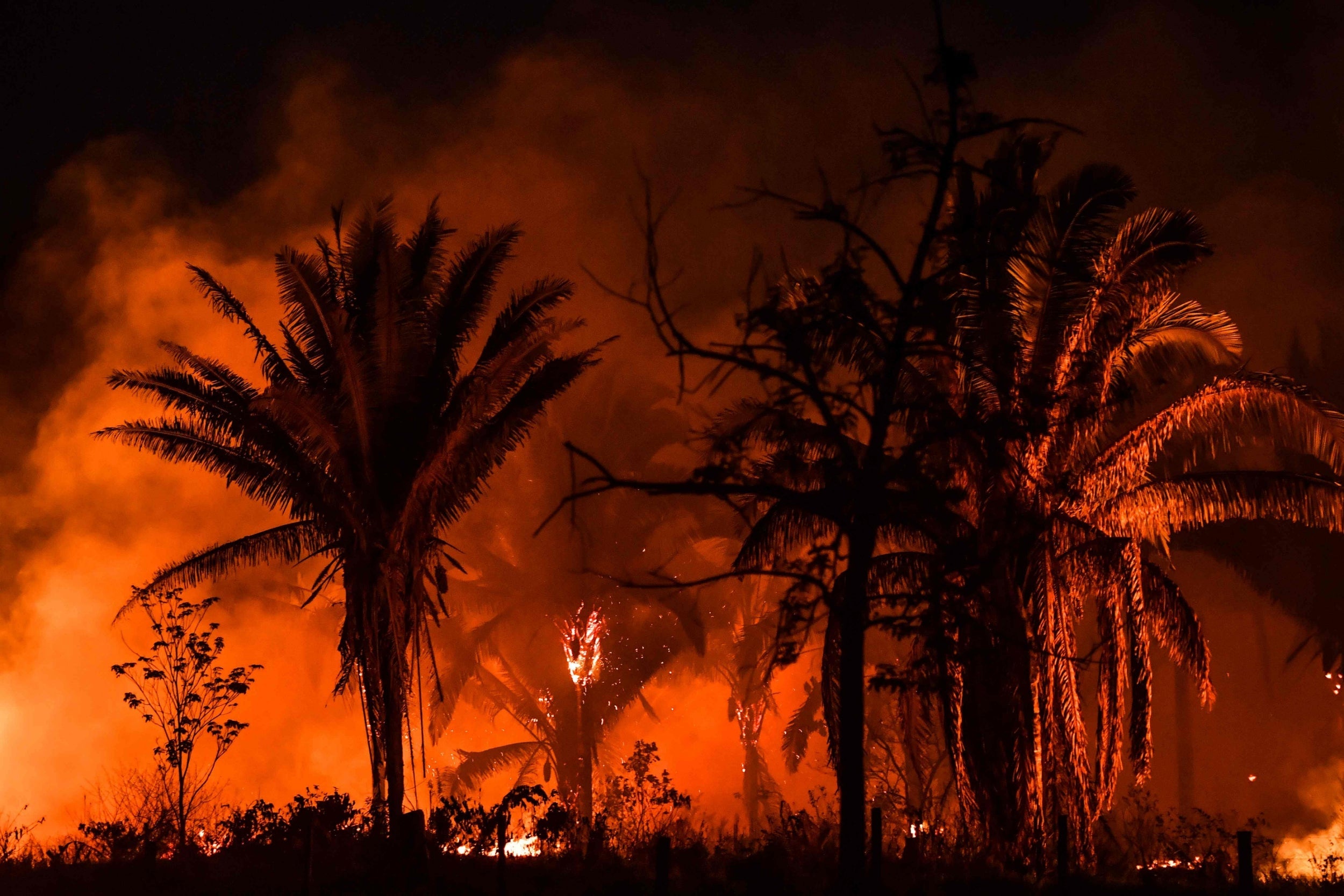This website uses cookies so that we can provide you with the best user experience possible. Cookie information is stored in your browser and performs functions such as recognising you when you return to our website and helping our team to understand which sections of the website you find most interesting and useful.

Fires in Brazil’s Amazon rainforest increased by 20 per cent in June, reaching a 13-year-high for the month according to government data, as researchers fear the region is on track for a repeat of last year’s devastating blazes.
Health experts also fear smoke from fires during the dry season could cause respiratory problems and complicate tackling vast numbers of coronavirus cases. More than 58,000 people have died of Covid-19 in Brazil and the country has seen more than 1.3million cases overall, according to the World Health Organisation.
In June, Brazil’s government space research agency, INPE, detected 2,248 fires in the Amazon rainforest, up from 1,880 in June 2019.
Last August, Brazil saw a surge in fires, sparking global condemnation that the country was not doing enough to protect the world’s largest rainforest.
June 2020 averaged roughly 75 fires per day in the Amazon, compared with an average of nearly 1,000 blazes a day when fires peaked in August 2019.
“It’s a bad sign, but what really is going to count is what happens from now on,” Philip Fearnside, an ecologist at Brazil’s National Institute of Amazonian Research, told Reuters.
A more worrying indicator is rising deforestation, he said, because fires are usually set to clear the land after trees have been cut down.
Deforestation is up 34 per cent in the first five months of the year, from a year ago, preliminary INPE data shows.
Brazil's right-wing president Jair Bolsonaro has been criticised for dismantling forest protections that had helped a record reduction in deforestation between 2004 and 2012. Deforestation in the Amazon has soared in recent years, reaching an 11-year high in 2019.
Mr Bolsonaro has called for more farming and mining in protected areas of the Amazon, while defending the country for still preserving the majority of the rainforest.
Mr Bolsonaro deployed the armed forces to protect the Amazon in May, as he did in August last year. Despite that initiative, deforestation rose 12 per cent in May from a year earlier and increased in June.
The Amazon Environmental Research Institute (IPAM), a non-governmental organisation, predicts that at the current pace of deforestation, by the end of the month some 3,475 square miles of Amazon will have been cut down but not burned since Bolsonaro came to power in 2019.
The areas at risk of being set ablaze compare with around 2,138 square miles deforested and burned from January 2019 to April 2020, according to IPAM analysis last month.
“When the dry season arrives in the Amazon, these felled trees will become fuel for burning. This was the main ingredient of the 2019 fire season, a story that can repeat itself in 2020 if nothing is done to prevent it”, researcher Ane Alencar, director of Science at IPAM, said in an April statement.
Communities in the Amazon are bracing for the smoke that blankets the region during the fire season, typically at a peak from August to November.
Guilherme Pivoto, an infectologist in Amazonas state, told Reuters that worsening air quality could impact coronavirus patients. The state, in the northern region of the Amazon rainforest, has been one of Brazil's hardest-hit by the pandemic.
“Those that contract Covid have a higher chance of an interaction between the pollution and Covid-19, causing drawn-out cases with more symptoms,” Mr Pivoto said.
The number of coronavirus cases in Brazil are second only to the US. However, health experts believe the actual number of cases in Brazil could be up to seven times higher than the official statistic. Johns Hopkins University said the country is performing an average of 14 tests per 100,000 people per day, as much as 20 times less than what is needed to track the virus.
Additional reporting by Reuters



 Africana55 Radio
Africana55 Radio 

